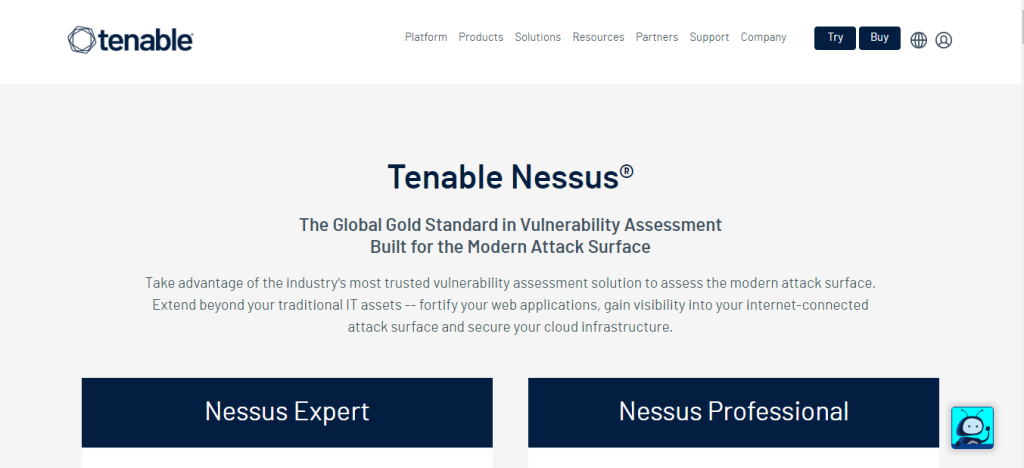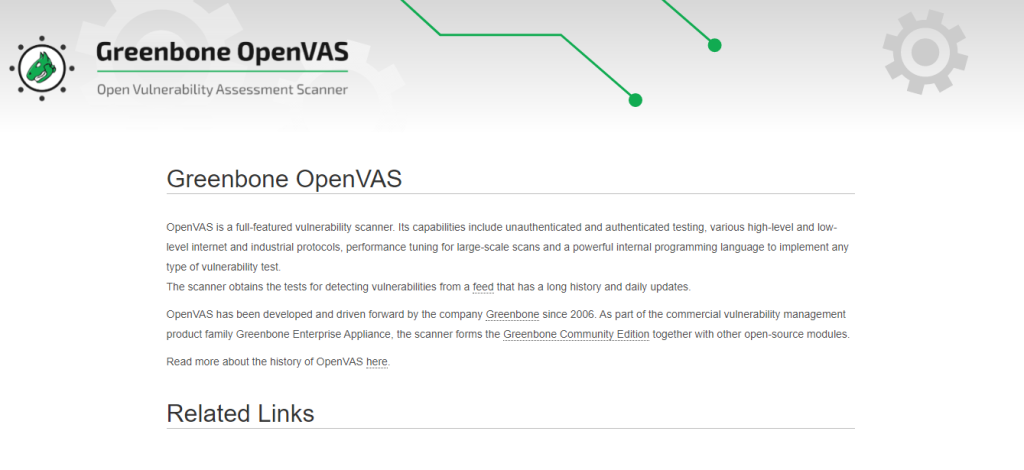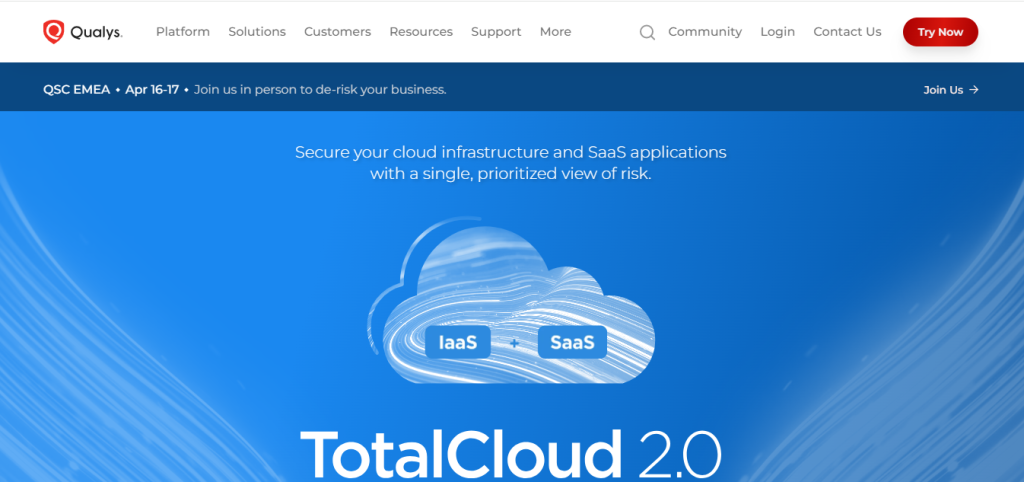
Cybersecurity is a major concern for all types of enterprises in the modern digital era. Vulnerability scanning is vital for cybersecurity. It finds holes in a system before bad actors can exploit them. We will examine vulnerability scanning software in this post. We will cover its features, benefits, and importance for companies.
“Active vulnerability scanning is important for cybersecurity because prevention is better than cure.”
Vulnerability scanning software
Vulnerability scanning software is a tool. This is used to execute the scanning of computer networks for security faults. Organizations use these tools to find security risks. They do this by spotting weaknesses in their systems, applications, and networks. Vulnerability scanning software uses a database of identified vulnerabilities and security fears to scan for faults. It creates reports for remediation.
In this context, we will discuss some key features and benefits of Vulnerability scanning software
Features of VSS(Vulnerability scanning software)
Some key features of vulnerability scanning software are listed here
1. The ability to scan The final but most important step in vulnerability scanning is ongoing evaluation. To keep your company safe, pick software that can scan often. It should catch new vulnerabilities right away.
2. The agent-free method avoids the need to install and maintain scanning clients on target systems. This is true if your vulnerability scanning tool is agentless. These technologies remove incompatibility. They use fewer resources and network-based scanning.
3. Accuracy Frequent scanning can be made flexible with automated scanners, but can you take action? Does the seller offer POC? POC is a request for evidence. They offer it with their support services. Businesses will benefit greatly from this rise in productivity. They can now get more thorough proof and do false-positive tests when needed. They can do these before trusting a developer to fix a reported issue.
4. Producing Correcting Reports Reports from vulnerability scans is essential. They give a fuller summary of your assets’ security. They reveal details about the vulnerabilities found. The reporting tools show the number of finished scans and the number of found vulnerabilities. They also show the steps you may take to fix most of the risks.
5. Total Risk Index Organizational asset scanning helps firms identify areas of vulnerability. But, addressing them requires striking a tough balance. This balance is between the priorities for risk and the available resources. The feature that shows the risk levels as low, medium, and critical for all vulnerabilities found can be used. It is called the total risk score. The risk score is based on the number and seriousness of the vulnerabilities in your Application.
6. Enhanced Features for Verification: Some of the best vulnerability scanners have verification scans. But, non-verified scanning finds backdoors, weak passwords, old encryption, and unpatched software. This module searches webpages and web apps that require a password without logging in with a command.
7. Thorough coverage of the workload: The scanning tool must scan many systems at once. It must scan the databases, web apps, and endpoints of the server’s workloads. These tools allow for practical and efficient vulnerability remediation.
Advantages of VSS (Vulnerability Scanning Software)
Vulnerability scanning software offers several advantages to businesses. They are trying to improve their cybersecurity.
1. Maximizes the need for the necessary fixes
Many vulnerabilities are difficult to locate and become invisible until they are discovered. Scanning finds these vulnerabilities. It also shows you how to fix them. Don’t patch network parts at random. Find the exact flaws to fix and which areas to prioritize.
2. Protections the authenticity of your company’s assets
Hidden in services and apps, malicious code has many weaknesses. You won’t see it without a scan. You might never find out where hackers enter a system or take private data. Perform routine scans. They ensure your company’s assets are safe. They show stakeholders and clients that you are trying hard to secure their data and trust.
3. Boosts the effectiveness of operations
Most vulnerability screening can be automated. So, it can be done quickly, even on a big corporate network. They will save time and effort. They will only intervene when there is a problem to be fixed. However, using automation to search for vulnerabilities doesn’t mean doing it less often or less thoroughly. IT staff can focus on other projects. They can do this by cutting the hands-on time they spend on it.
4. Determines your degree of security risk
Frequent vulnerability scans quantify your IT hygiene. They do this by evaluating how well your security controls work. Scanning software usually makes a report. The report lists and rates the assets in your network and their risk level. The analysis finds high-risk locations in your network. It lets you change your security posture and strategy. You can also patch or repair it. The report can be used to update or modify your security plan as necessary.
5. Fulfill the criteria for data protection
The GDPR does not require vulnerability screening. But, it does require businesses to use the necessary technology and security. They must do this to protect personal information. Finding weak points in your systems and networks is part of it. Furthermore, there might be additional regulations or legal mandates for vulnerability screening. For example, many ISO standards might require technical and security measures. These measures are like those required by GDPR. Payment companies must conduct vulnerability scanning. The Payment Card Data Security Standard (PCI DSS) requires them to do this. Maintaining compliance may depend on you doing it frequently.
6. More allocated resources
Today’s business networks are large and complex. They need a lot of help and money to stay secure. Regular vulnerability scans help you find the most vulnerable tech areas. Then, you can better allocate resources to fix them. You’ll complete tasks faster. This is if you have the right IT mix in your organization. Make sure your tech leaders know what resources you need. Plan your budget each quarter or year accordingly.
7. Save cash.
Data breaches cause businesses big losses. They face IT costs. They also lose revenue and may get fines and damages from lawsuits. Automated vulnerability checks are easy to do. They check things more than humans. So, they will save you money in the end. Also, you’ll need the scan results as evidence. They show you took reasonable care to safeguard your systems. You need them if your business has cyber insurance.
8. Helps businesses in keeping up with evolving security demands
Today’s network architectures have many components. They range from on-premises to public and private clouds and everything in between. This makes it hard to keep track of them all. Your security plan becomes outdated by the time you complete it. Frequent scans can keep you informed about new vulnerabilities and attack methods. They help you make changes and keep your network secure.
Here is the list of vulnerability scanning tools and software.
1. Nessus

Nessus is the most reputable name in vulnerability assessment and management. It is extensively used to identify and fix vulnerabilities including missing security patches, software flaws, and misconfigurations. It supports an extensive range of operating systems and applications, making it a flexible tool for many different use cases.
Key Features:
- Sensitive data discovery. Nessus can discover sensitive data located on the network and provide clear, actionable steps for defending that data in compliance with regulatory standards.
- Configuration auditing. Security teams can confirm IT assets are compliant with particular compliance-oriented audit policies designed to meet a wide range of assets and standards.
- High-speed discovery. Nessus supports high-speed network asset discovery scans by advanced features. Break up scans into simply managed subnetworks and configure ping settings to make the scan quicker.
2. OpenVAS

OpenVAS is a good open-source tool that offers a broad scanning to organizations of all sizes. It is available under a GPL (General Public License) agreement, making it a cost-effective option related to competing exclusive software options. It supports a good range of customizable plugins by its open-source developer community.
Key Features:
- Supports a wide range of vulnerability tests. The upper level of customization presented by OpenVAS allows security teams to run many different kinds of vulnerability tests from a single, centralized interface.
- Customizable plugins. As with some good open-source tools, there is a booming community of developers involved in creating customizable plugins for unique use cases.
- Open-source vulnerability scanner. Companies can use and customize OpenVAS at no charge, giving it an important benefit for organizations that arrange cost savings.
3. Qualys

Qualys is an initiative cloud security provider that includes vulnerability management in its compliance platform and IT security. It includes features that help security teams know and manage security risks while automating remediation with intuitive no-code workflows. It integrates well with other initiative security solutions, but may not be reachable for smaller companies.
Key Features:
- All-in-one vulnerability management workflow. Qualys protects all of your remediation and vulnerability scanning needs in a single, centralized platform. It conducts asset discovery, prioritizes findings, detects vulnerabilities, and launches responses with deep customization and automation capabilities.
- Web application scanning. This platform is well-suited to organizations with wide public-facing web applications outside the network outside. It supports container runtime security, including container-as-a-service environments.
- Complete compliance reporting. Security teams could renew expiring certificates directly by Qualys, making it a huge solution to locating and preserving compliance.
These tools play a vital role in addressing and identifying security vulnerabilities, helping organizations in strengthening their cybersecurity defenses and justifying potential risks.
Conclusion
In modern cybersecurity procedures, companies need vulnerability scanning software. It helps find and fix security faults. By using these tools businesses may lower the risk of cyberattack. Industries are obeying regulations. They are boosting security by investing in these solutions. Vulnerability scanning software is a key tool for any organization. It helps them protect their digital assets in today’s ever-changing threat landscape.
Tech World Times (TWT), a global collective focusing on the latest tech news and trends in blockchain, Fintech, Development & Testing, AI and Startups. If you are looking for the guest post then contact at techworldtimes@gmail.com

